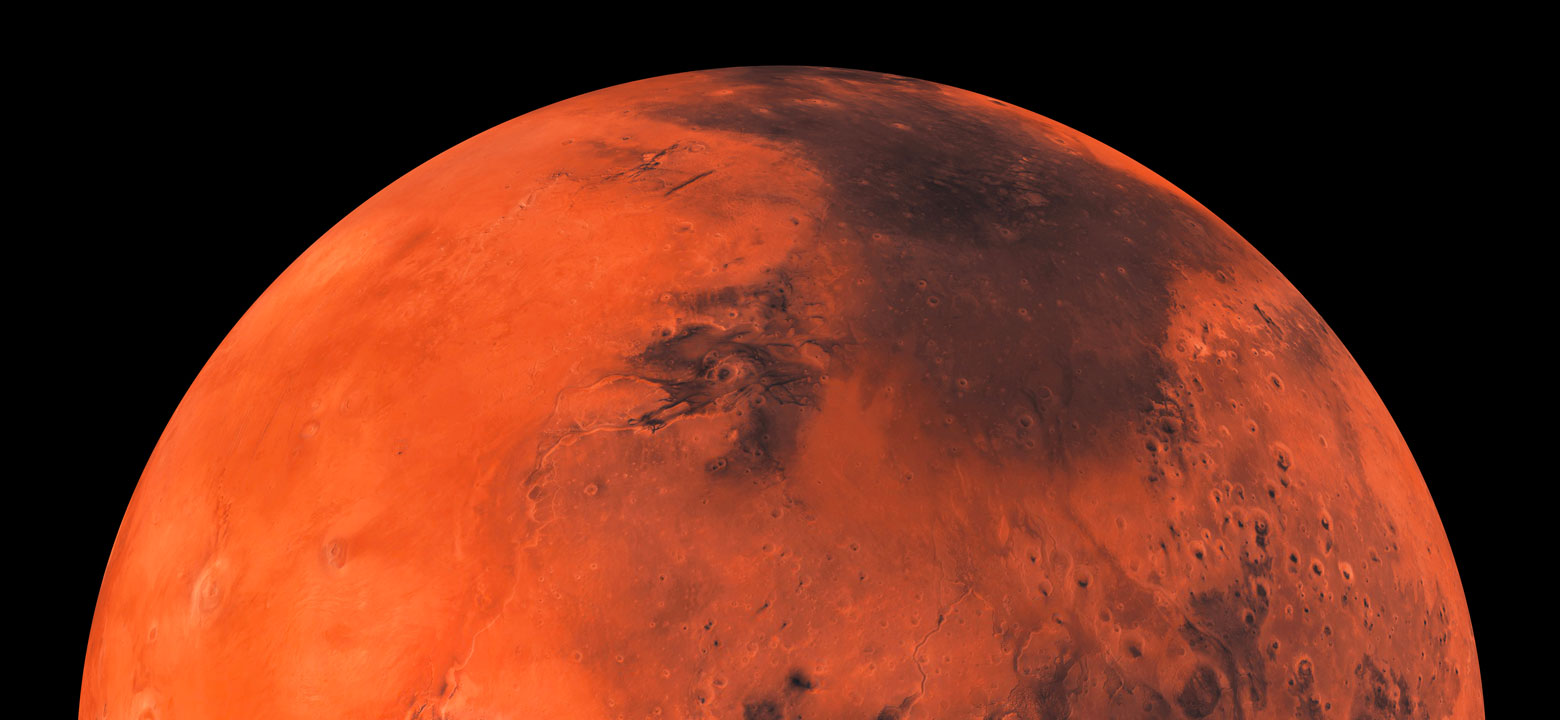
The rocky Red Planet might seem like an odd choice to go looking for signs of life. Just looking at its dry, dusty surface, it's hard to imagine it supporting a thriving ecosystem. In the 1970s, the Viking probe was the first to land on the surface of Mars and send back photographs, and it indicated that there was no life there. Considering that Mars experiences winter temperatures as low as -225º F (-153º C) and a very thin, carbon dioxide-heavy atmosphere, any life that did exist would have to be extremely hardy in order to withstand the combination of solar radiation and plunging winter temps.
Mars wasn't always like this, though. At one point, it was covered in liquid water and had a much thicker, more protective atmosphere. This is what gives scientists hope of finding signs of either extinct organisms, or traces of long-hidden living things. With the Mars rover's latest discovery, researchers might be one step closer to finding the answers to their questions about life on Mars.
In the past, when Mars was more hospitable, it's very likely that it managed to host at least microbial life. As time passed, the planet's magnetic field diminished, its oceans evaporated, and its atmosphere dissipated, it would've become increasingly difficult for that life to remain on the surface. If it existed, it most likely either died out, or was driven deep into the planet into underground aquifers. In any case, it's highly likely that it left some telltale signs on the surface.
The National Aeronautics and Space Administration (NASA) recently published a study suggesting that the Mars rover may have discovered some of these long-sought signs of life. Not only that, they may have been hiding in plain sight the whole time.
On Earth, life is carbon-based. Carbon is so necessary for life, in fact, that it's very aggressively recycled every time an organism does so much as exhale. It's found in our air, seas, stones, and bodies. Observing traces of specific types of carbon lets researchers follow its path through the planet's cycle.
This is just as true on Mars as it is on Earth. NASA's Curiosity rover spent most of the last decade analyzing the Gale Crater, using on-board geologic sampling equipment to pick up soil and rock from 24 different testing sites around the crater. These samples were then placed in a special chamber within the rover, heated to a high temperature, and analyzed with a spectrometer. This gave researchers information about the contents of the samples, including the presence of a specific kind of carbon atom.
Carbon is commonly found as either carbon-12 or carbon-13. Carbon-13 tends to form bonds that aren't suitable for the kind of things living things need it for. Carbon-12, on the other hand, is commonly used in biological processes.
Here's the really interesting part: The samples that Curiosity picked out of the Gale Crater contained much more carbon-12 than were previously found in the Martian atmosphere or meteorites.
There's a reason why this finding is so significant. Since living organisms rely on carbon-12, single-celled organisms would take up carbon-12 over carbon-13. It's likely that they produced methane as a byproduct. Methane is made of one carbon atom and four hydrogen atoms, and is a relatively lightweight molecule. After being excreted by single-celled organisms, it could've risen to the atmosphere, where it would eventually break down and allow the carbon-12 atoms to fall to the ground again.
The amounts of carbon-12 discovered in these samples is comparable to what one might find on Earth in biological methane. Another fact that lends some weight to the possibility of this carbon-12 originating from ancient life is that the samples that Curiosity collected came from areas that would've been above Mars' ancient sea level—and therefore especially vulnerable to being covered in deposited carbon-12.
This doesn't mean that Martian life is a foregone conclusion, however. There are some potential origins for the carbon-12 atoms that don't involve seas teeming with ancient alien bacteria. For one, passing through a galactic dust cloud could've caused cooling and the formation of glaciers, which would've caught a layer of dust and deposited it once they melted. Ultraviolet light could also have triggered changes in Mars' atmosphere, allowing carbon dioxide to convert to organic compounds like formaldehyde.
While the possibility of life on Mars is very tempting, these findings represent a single step in the research process. The presence of high levels of carbon-12 isn't enough to confirm the existence of ancient microorganisms, but it does give us a very interesting look into the Red Planet's carbon cycle, and a vital piece of information about its history.